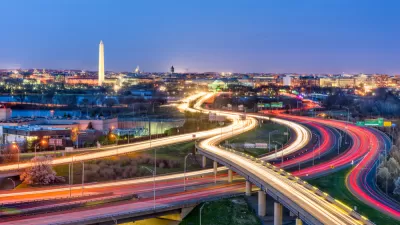Vision Zero: a strategy to eliminate road crashes, particularly those with fatal outcomes. COVID Zero: a strategy to end coronavirus transmission. Only one has worked—but at a steep price.

On Monday, 13 million Chinese residents in Xi'an were released from a 32-day lockdown that Chinese authorities had initiated after "more than 140 domestically transmitted infections with confirmed symptoms since Dec. 12 in its latest cluster caused by the Delta variant of the coronavirus," as Reuters reported on December 22, 2021.
'Lockdown' is a loaded word and should be used sparingly, as the extreme public health and safety measure goes far beyond any coronavirus business or gathering restrictions experienced in the U.S., as the Reuters report illustrated.
Starting Thursday [Dec. 23], only one person in each Xian household can go out for necessary shopping every two days, while other family members must stay home unless they have essential jobs, Xian government official Zhang Fenghu told a news briefing.
"The harsh lockdown in Xi’an became a symbol of the extreme measures that China’s government has taken to control Covid after testimonies emerged on Chinese social media of problems including people struggling to get enough food," report John Liu and Paul Mozur for The New York Times on January 24.
In other cases, those in need of medical care were denied entry to hospitals because of stringent epidemic prevention measures. In one case, a pregnant woman was refused treatment because of an expired coronavirus test. She later lost her child.
COVID Metrics
While extreme, the Chinese government credits their Zero Covid strategy for containing the coronavirus and achieving the "path to near-zero case incidence," as Harvard scholar Danielle Allen described in an early pandemic post.
On the day the lockdown was lifted, China averaged 87 infections, or less than 1 per 100,000 people, according to The New York Times global coronavirus tracker. Daily average deaths were zero. The World Health Organization's COVID tracker for China shows the last two COVID deaths were recorded on Jan. 10 and on Dec. 20.
By contrast, the U.S. approach to the pandemic has resulted in over 2,000 people dying daily since Jan. 20 from "a preventable and treatable disease," in the words of the director-general of the World Health Organization, Tedros Adhanom Ghebreyesus.
On Jan. 24, the U.S. averaged over 738,000 cases, according to the Times, a daily case incidence of 223 per 100,000 people. Daily average deaths exceeded 2,360, a rate of 0.71 deaths per 100,000 people. Russia had the second-highest average daily deaths, nearly 670, a rate of 0.46 per 100,000 people.
Sustainable?
"But many cases have involved the highly transmissible Omicron variant, and with each passing day, the government’s dogged pursuit of “zero Covid” is looking harder to achieve," wrote New York Times correspondents Amy Qin and Amy Chang Chien on Jan. 21. "Many wonder how long it can be maintained without causing widespread, lasting disruptions to China’s economy and society."
Related in Planetizen:
- Living (and Dying) with COVID: How Many Deaths are Acceptable? July 28, 2021
- Do You Know Your COVID-19 Colors? July 29, 2020
- Suppression or Mitigation? The Language of Coronavirus Containment, March 31, 2020
FULL STORY: China lifts a monthlong lockdown on the 13 million residents of the city of Xi’an.

Planetizen Federal Action Tracker
A weekly monitor of how Trump’s orders and actions are impacting planners and planning in America.

Map: Where Senate Republicans Want to Sell Your Public Lands
For public land advocates, the Senate Republicans’ proposal to sell millions of acres of public land in the West is “the biggest fight of their careers.”

Restaurant Patios Were a Pandemic Win — Why Were They so Hard to Keep?
Social distancing requirements and changes in travel patterns prompted cities to pilot new uses for street and sidewalk space. Then it got complicated.

Albuquerque Route 66 Motels Become Affordable Housing
A $4 million city fund is incentivizing developers to breathe new life into derelict midcentury motels.

DC Area County Eliminates Bus Fares
Montgomery County joins a growing trend of making transit free.

Platform Pilsner: Vancouver Transit Agency Releases... a Beer?
TransLink will receive a portion of every sale of the four-pack.
Urban Design for Planners 1: Software Tools
This six-course series explores essential urban design concepts using open source software and equips planners with the tools they need to participate fully in the urban design process.
Planning for Universal Design
Learn the tools for implementing Universal Design in planning regulations.
Heyer Gruel & Associates PA
JM Goldson LLC
Custer County Colorado
City of Camden Redevelopment Agency
City of Astoria
Transportation Research & Education Center (TREC) at Portland State University
Camden Redevelopment Agency
City of Claremont
Municipality of Princeton (NJ)





























